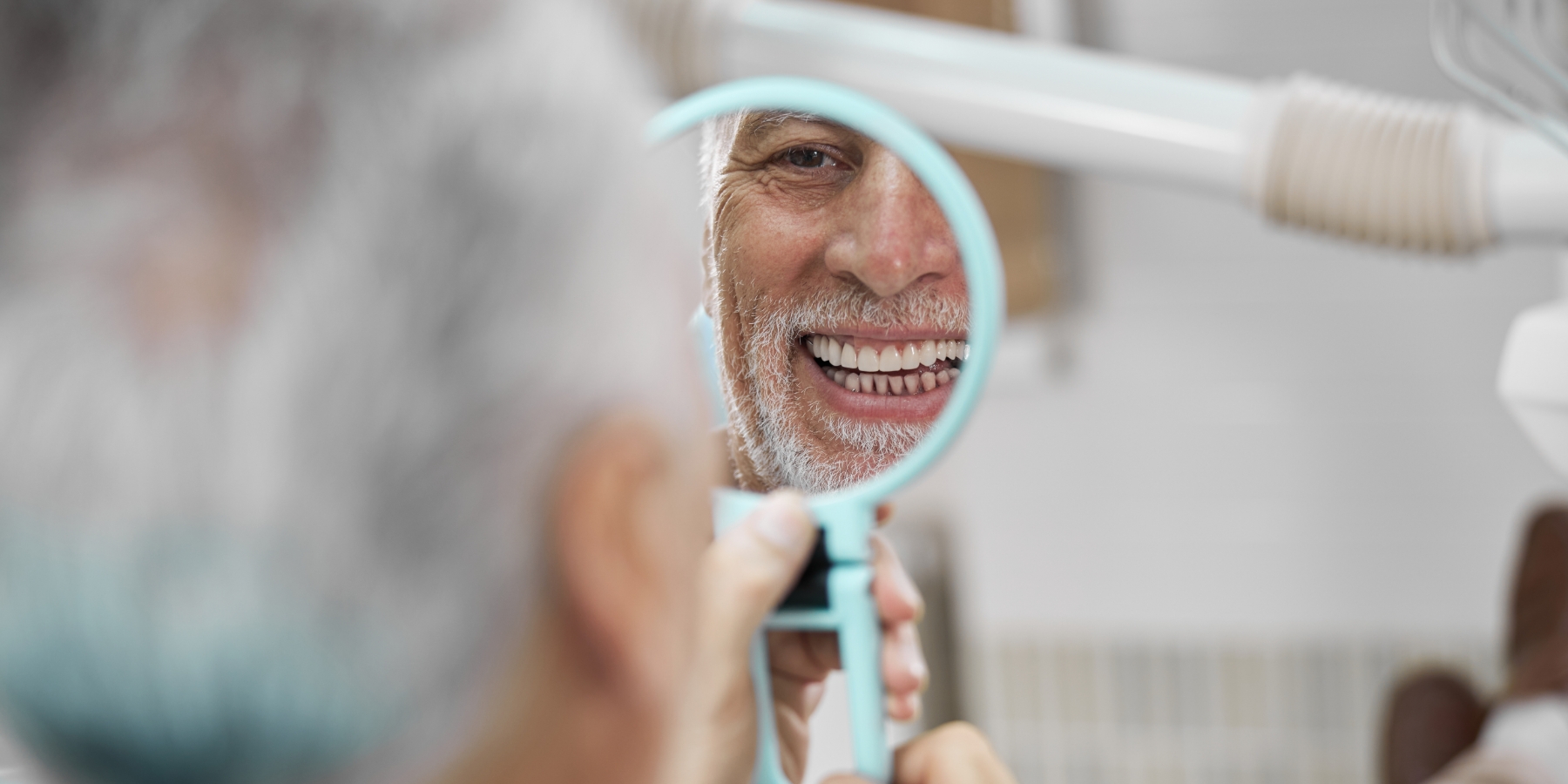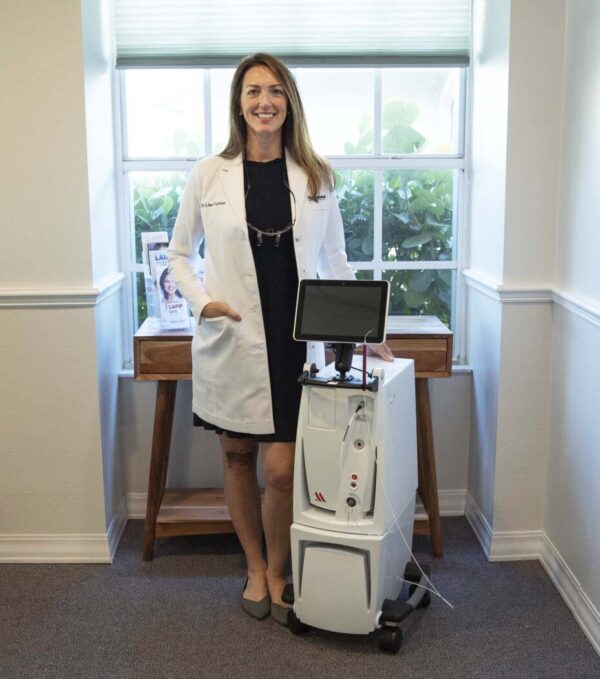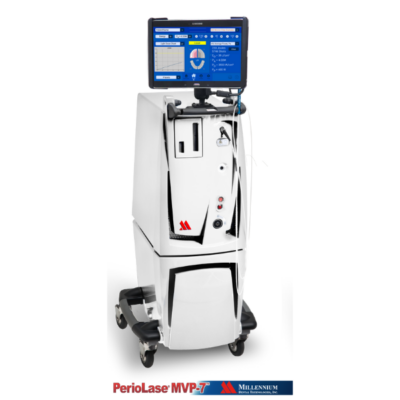
Treating Moderate To Severe Gum Disease
Periodontal disease is one of the most common diseases in the US, affecting more than 80% of adults. If left untreated, gum disease can lead to receding gums bone loss and even tooth loss. Yet, only 3% of adults with moderate to severe gum disease will accept treatment. Many of these patients have heard about the traditional treatments for periodontal disease that requires a healing period, and they decide to avoid it.
Thanks to FDA-cleared, advanced Periodontal Laser Technology, the PerioLase MVP-7 Laser allows a certified periodontist to perform minimally invasive laser treatment that can treat gum disease, save dental implants and even regenerate soft tissue and bone. While some severe cases may still require traditional surgery, laser surgery is generally a viable alternative for many patients.
Dr. Lisa Turner of Venice Periodontics and Implant Dentistry is experienced in the use of lasers in periodontics, and certified in techniques using the PerioLase MVP-7 Laser. All dentists certified to perform surgery with the laser are required to complete comprehensive, clinical, hands-on, dentist-to-dentist training over the course of a year at the Institute for Advanced Laser Dentistry (IALD). This in-depth training ensures that doctors have the skills necessary to perform laser surgery proficiently.
The Periodontal Laser Technology
The PerioLase MVP-7 is a dental laser featuring digital technology with the power and versatility to perform a wide range of laser procedures. This laser targets gum disease-causing bacteria because it focuses purely on diseased tissue and completely disinfects the environment. Removing diseased tissue and targeting these bacteria allows the patient’s own tissue a chance to begin regeneration.
Different lasers in dentistry interact with your body differently. There are various lasers used in dentistry, but only the PerioLase MVP-7 can be used for the LANAP protocol. Only the PerioLase MVP-7 is designed to support the parameters of the Laser Assisted New Attachment Procedure (LANAP) protocol and its modified version for use with dental implants, Laser Assisted Peri-Implantitis Procedure (LAPIP). These procedures can only be performed with the PerioLase MVP-7.
What Type of Regeneration Can Be Expected?
Regeneration refers to the formation of new bone and soft tissue. The use of the PerioLase MVP-7 creates the best conditions possible to speed a patient’s own natural regenerative healing processes by initiating regeneration of the periodontal tissues and giving them a healthy environment.
Since virtually no cutting or suturing are required, recovery is minimized, which allows the tissues to heal more efficiently. The laser also helps disinfect the area for better healing, and the light frequency used promotes rapid new tissue growth in the gums and bone treated.
What Is The Laser Used To Treat?
The PerioLase MVP-7 Laser can treat many oral conditions, including periodontal disease, aggressive periodontal infection, ailing dental implants and bone regeneration. This FDA-cleared technology is scientifically proven to remove diseased tissue and create an environment for periodontal regeneration, new bone growth, and gum tissue reattachment. With this advanced technique, Dr. Turner can successfully treat gum disease by targeting the source of the inflammation without hurting or removing any healthy gum tissue. Treatment can also slow or stop attachment loss and decrease pocket depth while allowing the body to recover from infection.
Although the laser can be used for various oral conditions, the two main conditions it treats are periodontitis and peri-implantitis.
How Does Laser Surgery Help Periodontitis and Peri-implantitis?

Since both periodontitis and peri-implantitis are caused by bacteria in the mouth that causes diseased tissue, they are treated similarly. The diseased tissue needs to be removed, and the remaining tissue needs to be allowed to reestablish itself to protect the good tissue, the jawbone, the teeth and any implants that may be present. The Periodontal Laser Technology, PerioLase MVP-7 is specifically designed to perform both the Laser-Assisted New Attachment Procedure (LANAP), and the Laser Assisted Peri-Implantitis Procedure (LAPIP).
Benefits of Laser Gum Surgery

- Less pain, sensitivity, and bleeding – There is minimal post-operative discomfort since there is no cutting and stitching of the gums.
- Quicker recovery time – With no cutting or stitching, most patients can immediately return to their regular daily activities following the procedure. Traditional periodontal surgery usually requires a two to four-week recovery.
- Healthy gums with minimal recession – Since no tissue is cut, the gums stay intact, so they look the same after the surgery as they did before it.
- Regeneration without foreign materials – Since the laser stimulates your body’s own healing response, your dentist doesn’t have to add foreign ‘growth factors.’
- No medication changes or stoppages – Patients on blood thinners or other regimens do not have to stop taking any medications
- No downside – The only time that the treatment may not be suitable for you is if your periodontal disease is too advanced. In that case, you may require more traditional surgery.
Experience the Difference in Specialized Care
Every treatment at Venice Periodontics & Implant Dentistry is guided by precision, compassion, and expertise. As one of the only full-time, board-certified periodontists in Venice, Dr. Lisa Turner provides focused care that protects the health and beauty of your entire smile. With advanced technology such as cone beam CT imaging and surgical lasers, patients experience comfortable procedures, faster recovery, and lasting results that restore confidence in their oral health.



